SPECTRA AND TECHNIQUES IN NMR
Nuclear Magnetic Resonance is no doubt the most powerful technique for structure elucidation in Organic Chemistry.
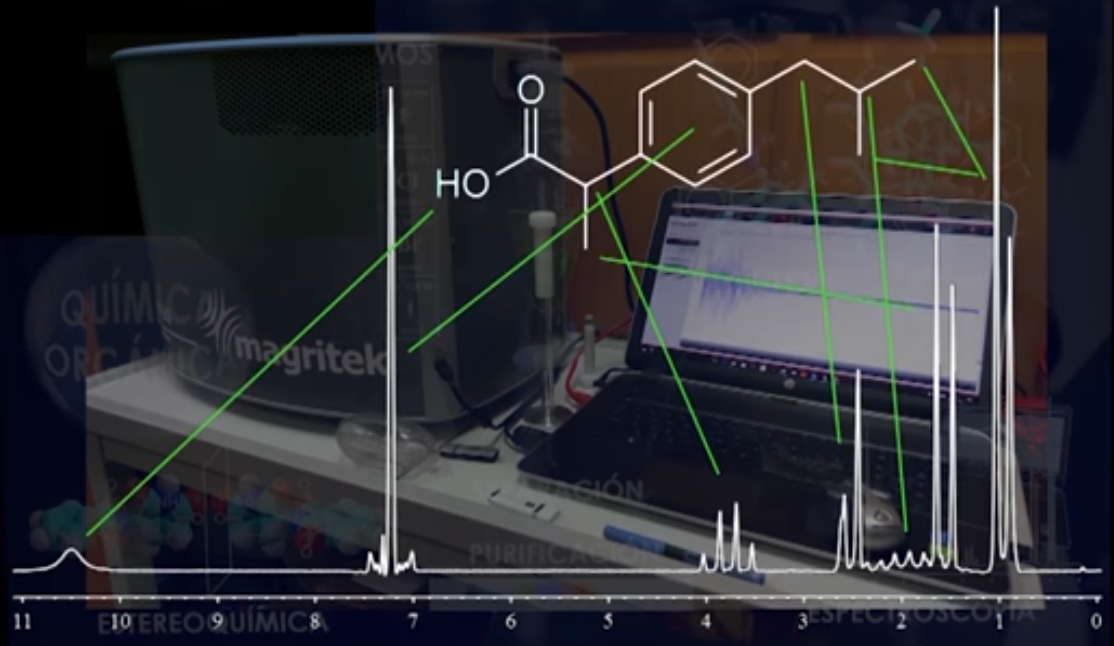 Signal assignment of 1H-NMR to ibuprofen structure.
Signal assignment of 1H-NMR to ibuprofen structure.
It is based on the fact that the most important nuclei in organic molecules (1H and 13C) can be made emmit individual signals when they are immersed in a strong magnetic field and are perturbed by a radiofrequency.
Those individual signals, duly deciphered, allow us to determine the structure of the molecule they emmit from.
NMR equipment has always been very costly. They also need a lot of room due to the usual large size of their magnets.
The first spectrometers dated back on the 60-70's of the past century used huge permanent magnets with which it was difficult to be over 1 Tesla, two low a magnetic field.
Neither their stability nor their homogeneity was very good, leading to relatively poor spectra.
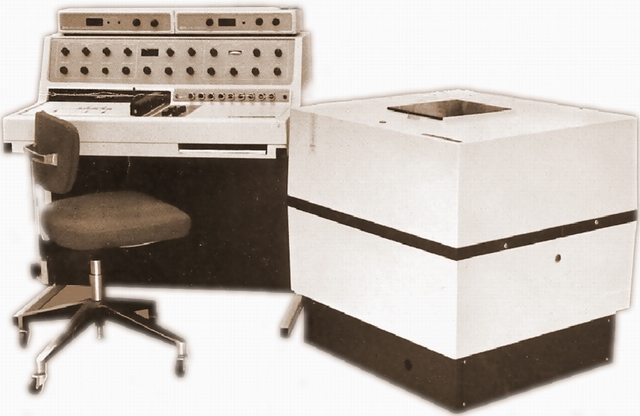 60 MHz 1H-NMR spectrometer circa 1970.
60 MHz 1H-NMR spectrometer circa 1970.
The use of more powerful electromagnets (up to ca. 2 Tesla) allowed for more homogeneous magnets but at a huge cost in electricity and cooling water.
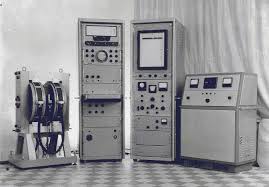 Electromagnet-driven 100 MHz 1H-NMR spectrometer of the 60-70's.
Electromagnet-driven 100 MHz 1H-NMR spectrometer of the 60-70's.
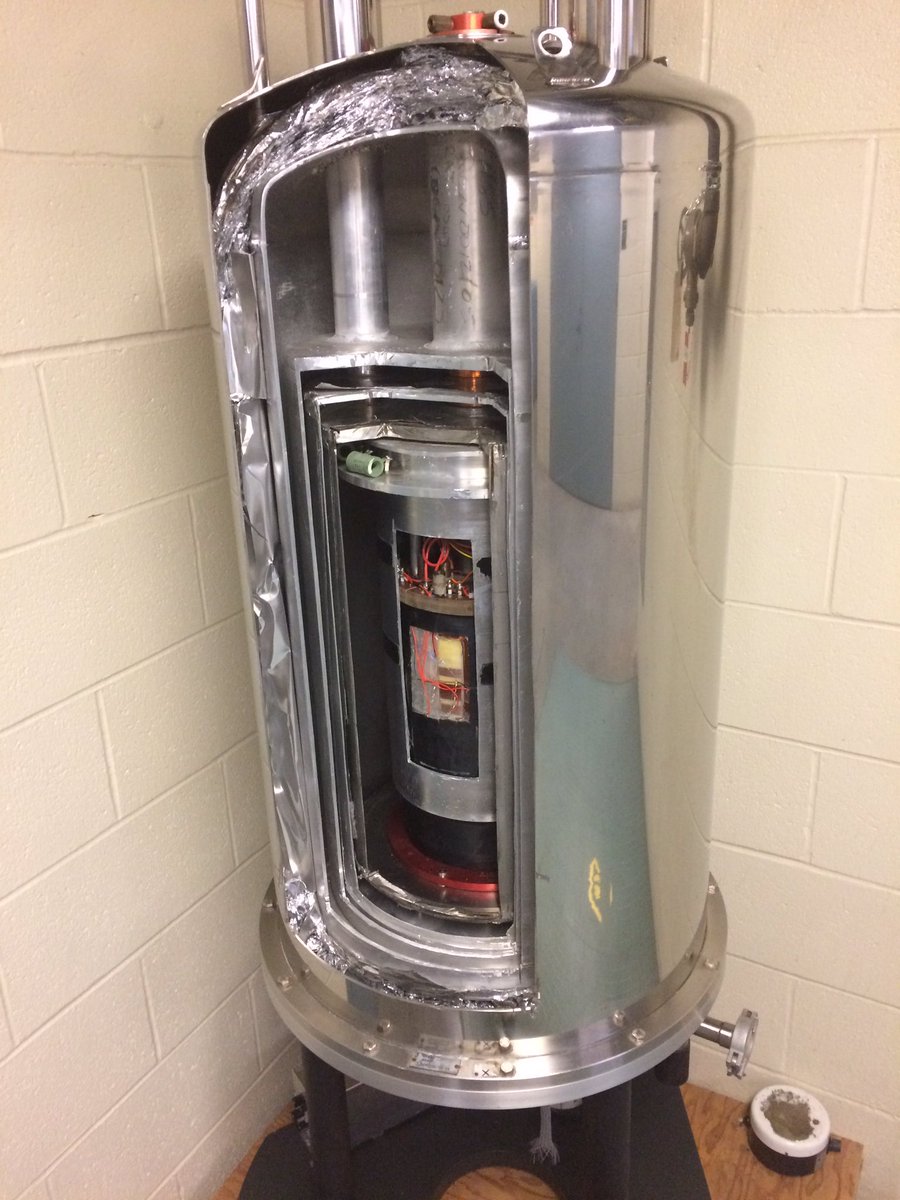 Open carcass of a superconducting magnet belonging to a former 200 MHz NMR instrument of the 80's.
Open carcass of a superconducting magnet belonging to a former 200 MHz NMR instrument of the 80's.
The revolution arrived mainly due to two facts:
1) Superconducting magnets allowing fields up to ca. 25 Tesla with excepcional stability and homogeneity.
2) Quick computing enabling the storage of huge amount of data and their fast Fourier transformation.
Unfortunately, for the time being. superconduction requires the coil generating the magnetic field be immersed in liquid He at -270ºC in order to achieve non-resistive electron circulation which is the base of superconduction.
Modern magnets are actually tanks filled with liquid He and N2, needing timely refilling of these expensive liquified gases.
The maintainance of NMR instruments is very costly and it demands well trained personnel.
Due to that, NMR instruments are usually integrated into general analytical service offices at the universities and only relatively big companies can afford them.
The cost of the smallest superconducting NMR instrument (9 Tesla working at 400 MHz in 1H) starts today in the range of 250-300k euros (300-400k US$) but its price easily skyrockets depending on the accessories required.
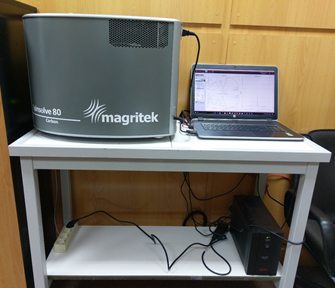 Last generation benchtop 80 MHz NMR instrument.
Last generation benchtop 80 MHz NMR instrument.
Electronics miniaturization and the finding of new magnetic alloys bearing spectacular field densities at room temperature are the basement of a new revolution in the past 5 years.
Nowadays one can find benchtop NMR instruments up to 1.8 Tesla (80 MHz for 1H) at a fraction of the cost of a superconducting spectrometer.
Its size has been heavily reduced because strong permanent magnets can be made much smaller today, their excellent stability and homogeneity being unthinkable a few years ago.
Besides, they are esentially maintainance free and don't hence need of specialized personnel.
Benchtop NMR instruments can integrate in any chemical lab because the investment is up to 8ok euros, similar to a sofisticated chromatograph, but there are more non-expensive options.
One wouldn't be surprised if NMR turns into "personal-NMR" as it happen with computers some 30 years ago.
The use of permanent magnets in these benchtop NMR spectrometers may mean kind of going back to NMR's origins, but with the enormous advantage of today's advances in electronics and computing.
Benchtop NMR instruments allow us today to run the very same sophisticated spectra recorded in superconducting spectrometers.
 Signal assignment of 1H-NMR to ibuprofen structure.
Signal assignment of 1H-NMR to ibuprofen structure.
 60 MHz 1H-NMR spectrometer circa 1970.
60 MHz 1H-NMR spectrometer circa 1970.
 Electromagnet-driven 100 MHz 1H-NMR spectrometer of the 60-70's.
Electromagnet-driven 100 MHz 1H-NMR spectrometer of the 60-70's.
 Open carcass of a superconducting magnet belonging to a former 200 MHz NMR instrument of the 80's.
Open carcass of a superconducting magnet belonging to a former 200 MHz NMR instrument of the 80's.
 Last generation benchtop 80 MHz NMR instrument.
Last generation benchtop 80 MHz NMR instrument.